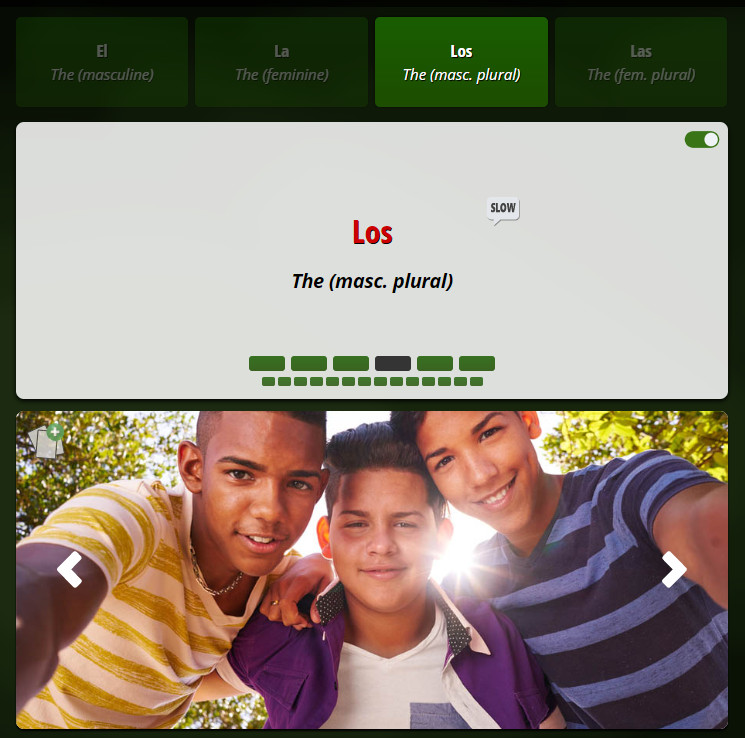Grammar: The whole system and structure of a language or of languages in general, usually taken as consisting of syntax and morphology (including inflections) and sometimes also phonology and semantics.Oxford Dictionaries
Does this definition make you excited to start learning? Probably not. For most people, grammar is the part of the language they dislike the most. We wanted to change that. The Building Blocks module will teach you the words that connect everything together and teach you the structure of the language. This module contains a lot of English narration to explain things that are not as simple as direct translations. It is like having a personal teacher with you at all times. You will understand how everything works with clear explanations in your native language.
Yes, this module started out as the grammar module, but this makes it sound rather difficult and boring. We reorganized it in a way that makes learning easier and more interesting. It became the Building Blocks module.


At the top of the screen, you will see up to six buttons. These are the words or topics covered in this lesson and divided in mini sections. The navigation of the lesson is very easy to understand. Click on the top buttons to navigate to a particular mini section. You will see the word isolated to the right of the picture, you can click on it to repeat or click the slow speech bubble next to it to repeat it slowly.
You can click on the example sentence or the slow speech bubble to repeat it. Using the navigation in the Building Blocks lesson is very important because the lessons are a little more technical than in other modules. You may need to listen to the narration and examples a few times to really understand what a particular word means and how it is used in your new language.
As we mention in our introduction video, you should focus your attention on the red part of the example sentences. This is the part you need to learn for each lesson. The blue part is there to assist you in learning and to show you how this word fits in a sentence. Don’t worry, you will eventually learn the rest of the sentences. Some lessons are more challenging than others. We have marked some of the lessons as Level 2. These lessons should be taken after you have reached a certain level in the language. Learning grammar is important, but when it comes to the more complicated grammar, learning it in the very beginning is counterproductive. Having perfect grammar is not a prerequisite to communication. It is also important to note that something which may not make any sense to you as a beginner will become much easier to understand as you get familiar with the language. If a lesson is too difficult, use the Knowledge level stars to give yourself a low Knowledge level and make sure to come back to it later in the learning process. Keep smiling and keep learning, it will all come together. 🙂

Level One: Writing Boost. This level is a sort of combination between a multiple choice question and a written question. You will need to choose which word you think is the right word to complete the sentence and either type it in the answer box, or click directly on the word. We could have made a multiple choice question. However, through lots of experimentation with this module, we found it was more effective to actually type down the answer. It’s up to you! You can simply click on it if you want. However, identifying the correct answer and then typing it only takes a few seconds more, and it has an immense impact on memory. Getting a good score on this Writing Boost exercise meant better retention as opposed to a multiple choice exercise. It also means spending a lot less time on the next levels. You are not timed for this exercise, you do not need to worry about completing it quickly.


Level Three: Fluency Sprint. After taking the first two levels, you should be ready for this one. To complete this exercise you really need to know your stuff. 🙂 Similar to the Vocabulary module, type in the right answer to complete the sentence (with the correct spelling) and before the time runs out. There are no more hints of any kind. Fluent people can complete these exercises and after a bit of practice you will be able to do the same. After completing the Fluency Sprint exercise and getting the Fluency Award, you’ll be fluent in this lesson or category of lessons. Good job!